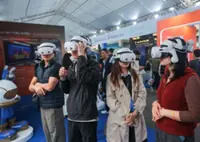A workspace at The Hive, a Microsoft Corp test center, in Redmond, Washington, US. The company has tinkered with triangles and half-ovals at its Redmond, Washington test center to achieve the best setup for in-office conferencing. — Bloomberg
Triangle, trapezoid, half oval and more – debating workspace tables these days can sound like a geometry class.
As employees embrace hybrid work, companies need to reevaluate meeting spaces when some attendees are in the office and others dial in. That begs the questions of how to optimise such spaces, which videoconferencing technology to use, and of course, defining what exactly a trapezoid is (read: a shape with four sides, two of which are parallel, while one or both of other two can be slanted).
Already a subscriber? Log in
Save 30% OFF The Star Digital Access
Cancel anytime. Ad-free. Unlimited access with perks.





